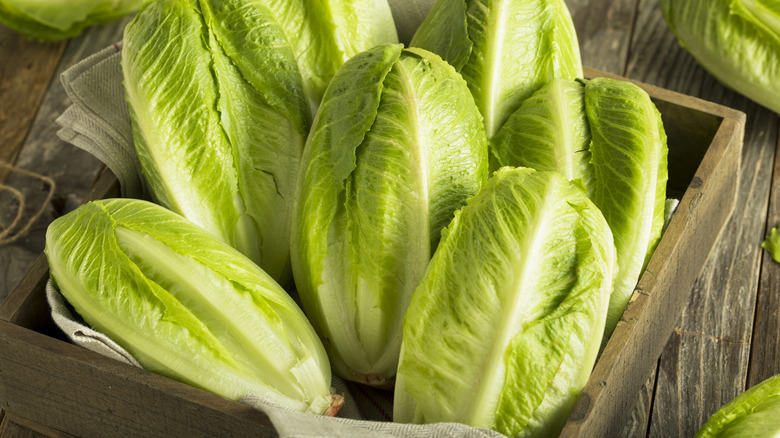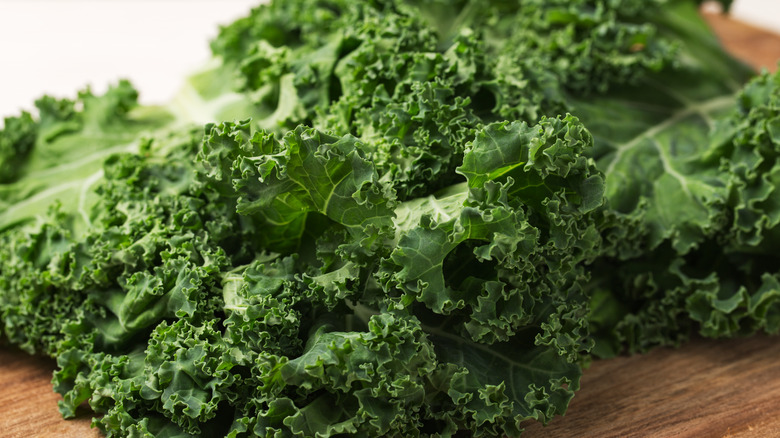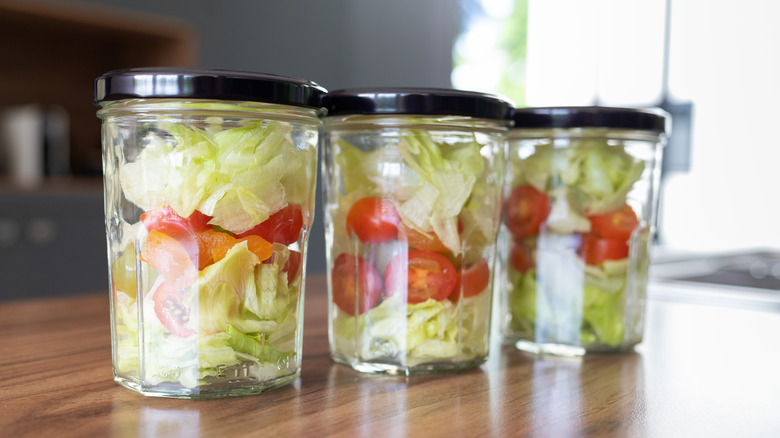Store Lettuce In A Mason Jar And Say Goodbye To Wilting
Lettuce is easy to prepare, but it can be hard to prevent it from wilting before you can eat it all. If simply tossing it in the fridge is your usual storage technique, you'll only have a week to use a whole head of lettuce, or mere days if your greens are pre-shredded. Storing it in a more proper manner doesn't have to be complicated. Beyond wrapping lettuce in aluminum foil or keeping it in the crisper drawer, you can also effectively lengthen its shelf life by storing it in a mason jar.
You should always avoid washing lettuce before storing it for future use, because excess water will only lead to slimy, limp leaves. The only prep work you should do in advance is to remove any damaged leaves from the head, then roughly slice it into large chunks that can fit in your mason jars. Once you've stuffed as much lettuce as possible into each jar, seal the lids and enjoy up to two weeks of crispy, green goodness.
If you're an avid canner and own a vacuum-sealing device, you can remove the air from the jars and help your fresh lettuce last up to a month. Keep in mind, however, that you'll need to quickly use up the lettuce once you reopen any of the jars.
What other greens can you store in a mason jar?
This mason jar hack is most useful for sturdy types of lettuce, like romaine and iceberg. These popular varieties already retain their crispness better than more delicate types, like bibb or green and red leaf lettuce. In fact, these easy-to-wilt breeds will resist your efforts to lengthen their shelf life, including the jar trick. Following the usual tips can help, such as not washing them in advance, but the best approach is to eat delicate greens ASAP. Leaving them to sit around is awfully risky.
While delicate greens may not be up to par, you can effectively store plenty of other veggies in jars, too. Spinach, chard, and kale are all great candidates. Just as you would with lettuce, avoid washing your greens before tightly sealing them in your jars. For the best results, do not mix different types of greens within a single jar. All greens have different shelf lives, and if one kind starts to spoil, the rot could transfer to its "roommate." Instead, keep all your veggies separate.
Whether you end up with one jar of greens or a dozen, always label each with its contents and the date you sealed the lids. If you decide to routinely jar your greens, place newer jars in the back and older jars in the front, so they can be used first. Just like that, you're one step closer to building your own refrigerator salad bar.
Jarred lettuce makes for a quick and easy lunch
The mason jar method comes with the additional benefit of making salads easy to assemble. You could chop your lettuce more finely before jarring it, so it's ready to be rinsed and eaten right away. Try refrigerating other jars and baggies packed with your favorite salad ingredients, so you can toss them all together in a flash.
To avoid having to wash your lettuce at your workplace, simply rinse it in the morning and put it back in the jar with paper towels to soak up any water you couldn't shake off. When lunchtime rolls around, toss your lettuce in a bowl with your other salad ingredients –- herbs, veggies, cheese, dressing, etc. -– for a delicious, on-the-go seasonal chopped salad. You can even add croutons for crunch or meat for protein, but only add these right before serving, to avoid both sogginess and food safety issues.
The best part of these hacks are that mason jars are reusable. Instead of storing your greens in zip-top bags or disposable deli containers, you can save on plastic waste while still keeping them perfectly fresh. That's a win for everyone, including Mother Nature.



